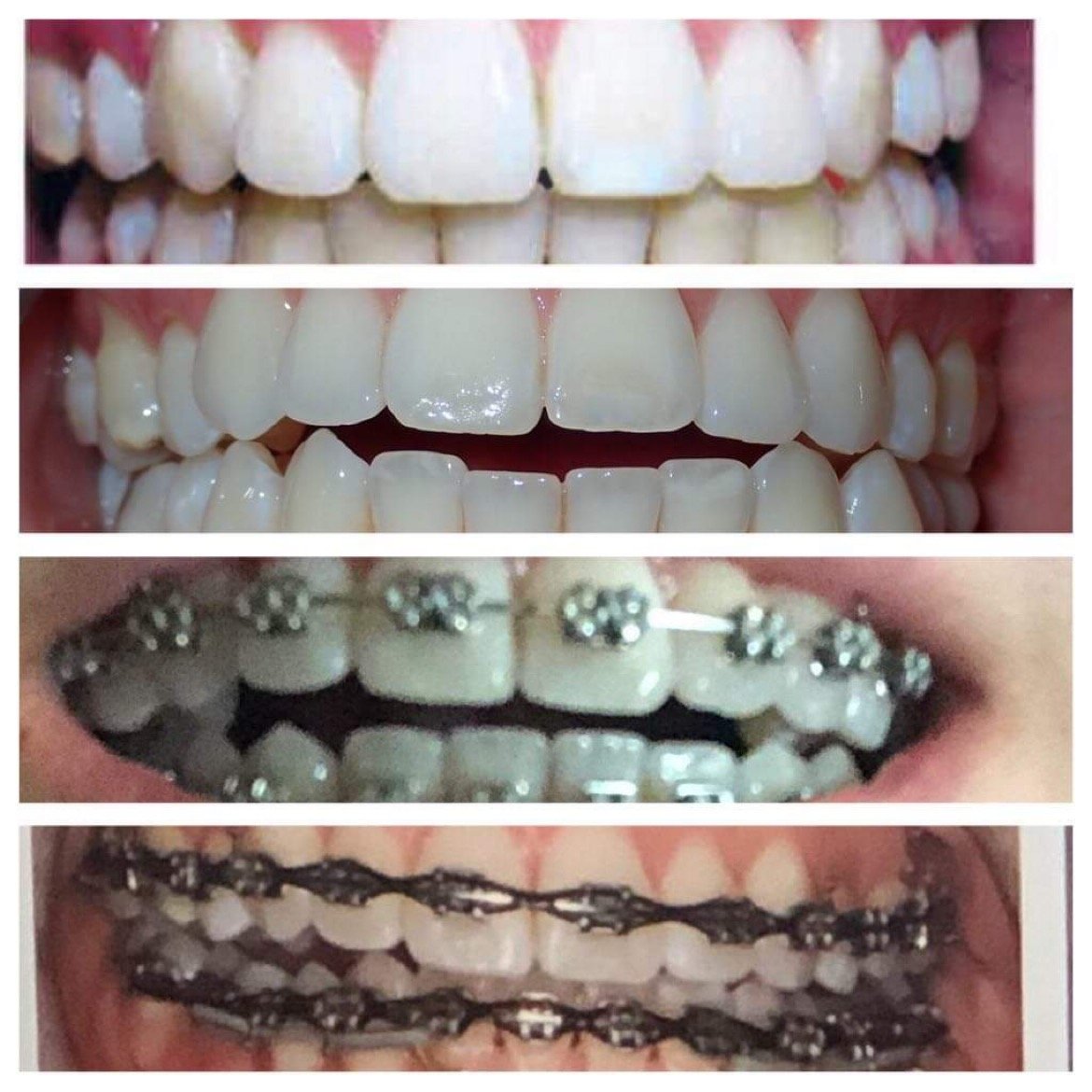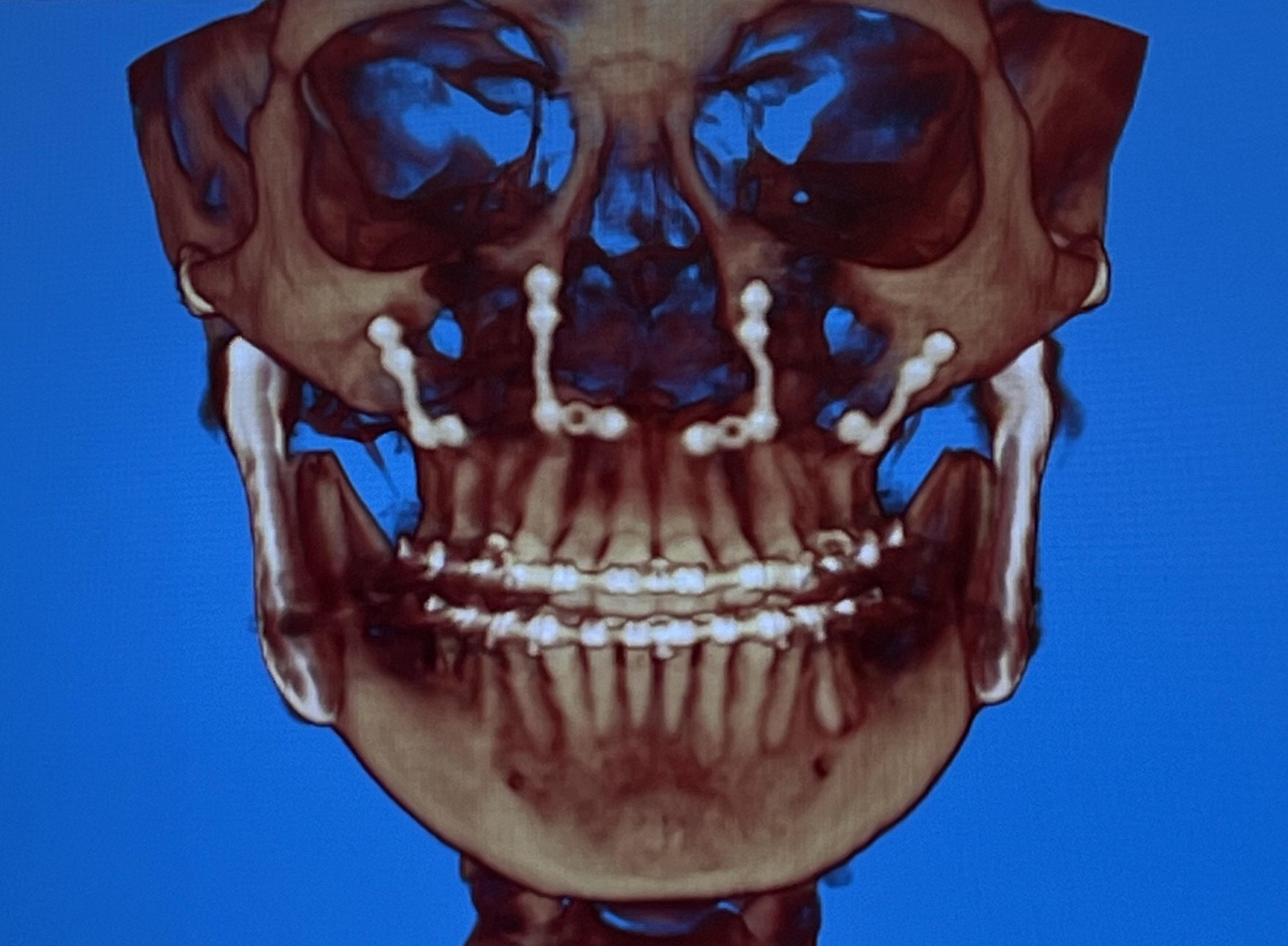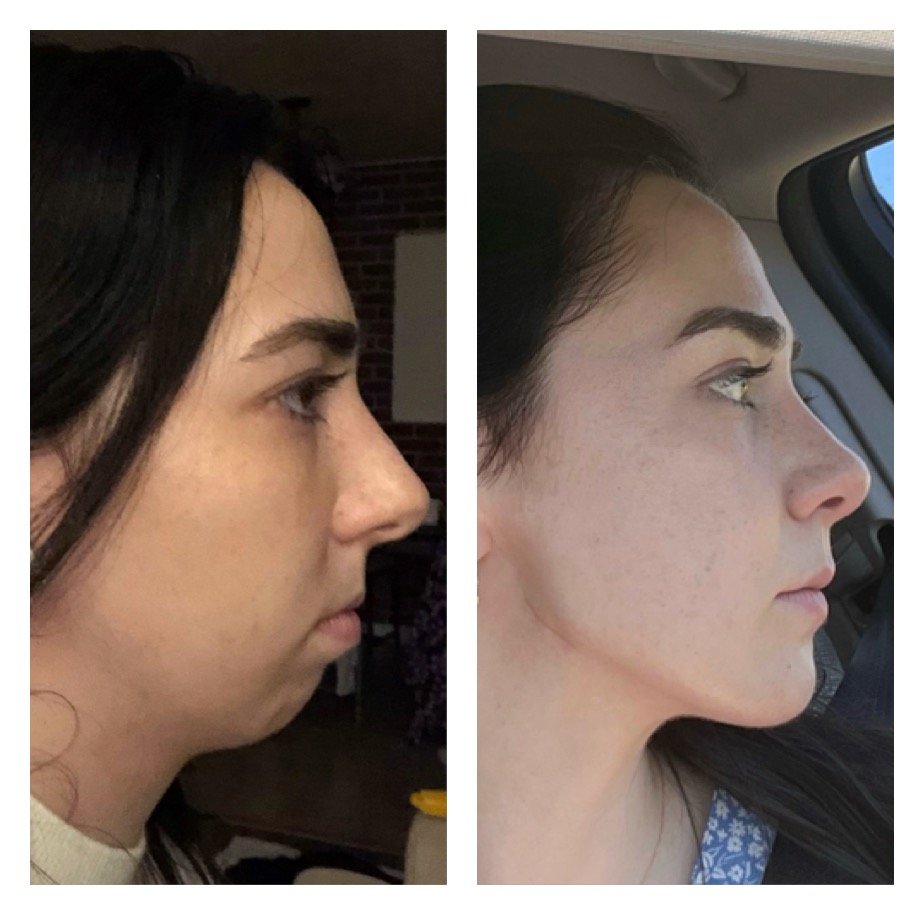Patient Spotlight: Emily Koch
Why do braces seem to work for everyone else, except me?
This can be an all too familiar question for people with undiagnosed condylar resorption. I ruminated over this same question while seated at the orthodontist, about to begin braces for the third time in my life at age twenty-five. Despite wearing multiple sets of retainers, the familiar anterior open bite had returned. Unhappy and embarrassed with the increasing gaps between my upper and lower teeth, I was determined to, once again, fix my occlusion.
Braces were an integral part of my teenage years. By age eleven, I had a large overjet which could only be fixed orthodontically. To prepare for braces, I had upper bicuspid extractions, followed by the nightly turn-key palate expander to widen my maxilla. The braces and rubber bands came next to align by teeth. All was well until, at age thirteen, I developed chronic pain in my jaw joints.
Pre-braces around eleven years old.
I mentioned the pain to my orthodontist and she diagnosed me with TMJ disorder, citing it to be a potential side effect of my braces. To combat the pain, we slowed my orthodontic treatment for a while. The pain did eventually lessen, and three and half years later my braces were removed at age fifteen.
I would look in the mirror, happy with my smile, but secretly hoped that my lower jaw would “catch up” and grow more. I was naïve as to the real cause, blissfully unaware that this was a pipe dream that would slowly unravel as I experienced years of improper diagnoses and care.
At a routine dental cleaning a couple of years later, my orthodontist stopped by to check my teeth. She explained that my occlusion had changed because my braces were removed too early, and she kindly offered to put me back in braces at no expense to us. Begrudgingly, I obliged, even though braces were the last thing I wanted during my final year of high school. After a year of re-treatment, my teeth were aligned again by age eighteen.
Frustratingly, the success of the re-treatment was short-lived. My bite reopened within a year’s time. I consulted with a new dentist, determined to know the cause of my open bite. He attributed my bite change to a potential tongue thrust issue, and told me to make do with the small gaps between my teeth. I was disappointed, but trusted that the professionals did the best they could, and I made peace with my situation.
After-visit notes from a dentist indicating a potential (but incorrect) cause of my open bite after braces #2.
My bite remained stable and the TMJ pain had mostly subsided until my early twenties. For unknown reasons, the TMJ pain came back with a vengeance at age twenty-four. The fundamental daily function of chewing food became tremendously difficult due to the jaw pain. It hurt my jaw to yawn and talk. I tried the conservative treatments – a soft chew diet, ice and heat, pain relievers, and physical therapy.
While the jaw joint pain did eventually subside over time, other cause-and-effect symptoms of my undiagnosed condylar resorption became more apparent. For years I slept with my mouth open, as it was the only way I could adequately breathe in my sleep. It became a frequent morning occurrence to wake up poorly rested and with a headache. There was constant ringing in my ears. Tension headaches now occurred more days than not. I had learned to adapt to the problems, unaware that all of these issues could be a response to my improperly formed jaw. I had no idea that “my normal” was not normal.
I simultaneously began to notice that something looked “off” about my face. As I looked in the mirror, I struggled to recognize the reflection looking back. I felt dejected. Where did my chin go? Why did it now have all this dimpling? I wondered if these changes were real, or a misperception that was all in my head. Even if I could not fix my chin, I could fix my bite. I set a New Year goal for myself to fix my occlusion again, and made my way back to the orthodontist, hoping that “third time’s a charm” would apply to correcting my teeth.
My new orthodontist’s plan was to do braces with Temporary Anchorage Devices (TADs) to “close my bite for good.” During that consult, my orthodontist off-handedly mentioned that my chin was small. I pondered over that comment for some time, researching what it could mean. From my research, I learned about jaw surgery and that it may be a thing to consider. I was three weeks away from my third round of braces, but could not dismiss the deeply uneasy feeling about this proposed treatment plan. How could I know that braces would work this time, for good? I spoke with my orthodontist about jaw surgery, postponed the braces, and scheduled a consultation with an oral and maxillofacial surgeon.
After a decade+ of no resolve, and after seeing three orthodontists, two dentists, one ENT, two physical therapists, and three doctors seeking a solution for my jaw problems – I finally had my answer. My progressively opening bite, receding lower jaw, and TMJ pain were all real and valid experiences. All it took was seeing the correct medical professional, and I had the diagnosis of idiopathic condylar resorption. If I had simply received the diagnosis when my condylar resorption started, could all of my years of braces, the jaw joint pain, and emotional stress from this disease been avoided? My struggles were blamed on not wearing braces long enough. My open bite was misdiagnosed as a problem from tongue thrust. I was even told that my open bite was because my upper jaw continued to grow into my twenties. There are undoubtedly many other patients being told the same misdiagnoses I had received, left in the dark with little to no peer or professional support.
Even after I received the diagnosis, my recommended treatment plan varied across the different surgeons I saw. Total joint replacement, versus an inverted L osteotomy with bone grafts (only to do TJR “once [the bone grafts] failed”), versus the wait-and-see what the bone scan results show, then decide. Receiving different proposed treatment plans is a common experience for condylar resorption patients, and can make the treatment decision all the more challenging.
Since I would be in pre-surgery braces for at least a year, I knew I had time to decide on a treatment plan that was best for me. I had concerns over how the braces would impact my resorption. Ultimately, my concerns were justified; a few months after I began my pre-surgery braces, my open bite worsened and my midline had shifted.
The TMJ pain became the worst it had ever been. I had a limited jaw opening and only two occluding teeth. Thankfully, I found a surgeon whom I trusted completely. With the condylar resorption once again active, total joint replacement was my most stable long-term solution, and I finally was at peace with this treatment option.
In April 2022, I had my jaw surgery: bilateral total joint replacement with custom jaw prostheses, three-piece LeFort 1, fat grafts to pad the prostheses, and coronoidectomies. After surgery, even with a swollen and numb face, everything felt so right. It is hard to put into words just how positively impactive this surgery has been.
Progression of bite changes over the years. Panels from top to bottom: my bite right after debanding from my second round of braces, one year after the debanding, two months into pre-surgery (my third round of) braces, and 11 months into pre-surgery braces.
Finally, with total assurance, my teeth will occlude forever. My lips now close when I bite down. I can now sleep restfully and breathe so much better. The joint pain is gone. I have the face that anatomically matches how I should have looked without condylar resorption.
Scan of my jaw after TJR.
For the first time in years, I now no longer think about my jaw. I have greater confidence and am proud to show my smile. No words can truly express my gratitude for my surgeon, who essentially gave me my life back (and a jawline!). This entire experience, although challenging at times, has made me a more resilient person, and I am incredibly thankful for that.
Side and front profile views of my pre-op face (left panels) compared to my four months post-op face (right panels).
Condylar resorption can be a tough and overwhelming diagnosis to navigate. From diagnosis, to dealing with the mental and physical difficulties the condition can bring, to deciding on a treatment plan, to finding ways to finance the chosen treatment plan, to recovery, and to everything else in between. The single most important lesson I learned from this journey is to continue to advocate for your health when something feels/is wrong, and I hope that my story can help encourage others to seek the care they need. I want other patients to know that successful treatment is possible, and that your future and circumstance can get better.






